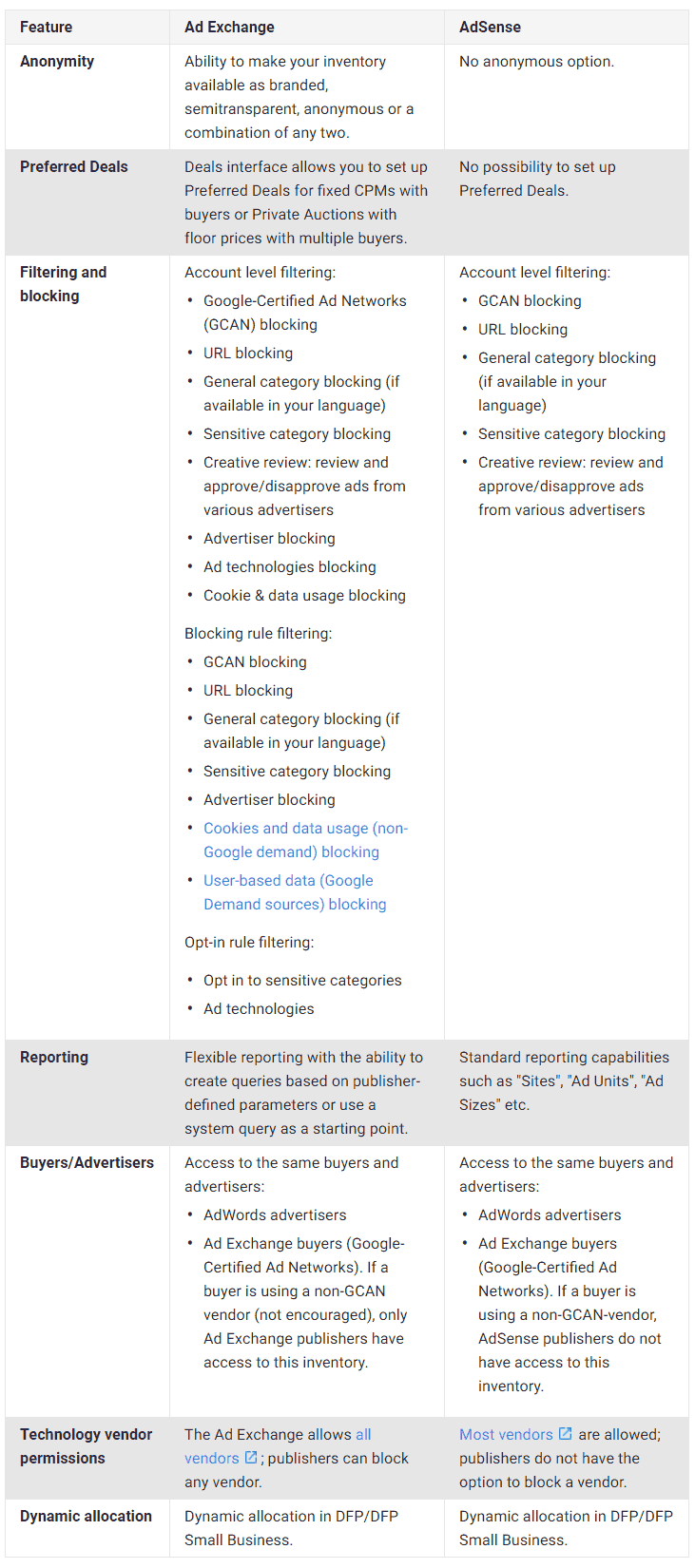When speaking to publishers or people looking to better understand the internet advertisement optimization space, the most common questions usually revolve around Google, mainly DFP, AdSense and Ad Exchange.
Publishers agree that Google AdSense and Ad Exchange are two of the must have tools in ad optimization space. But when they're just stated in venturing into these solutions, they usually ask about the differences between AdSense and Ad Exchange.
In short, they want to know which one is best for them.
First of all, AdSense and Ad Exchange are both ad placement services owned and operated by Google. They use programmatic real-time bidding method that was designed to help publishers sell their inventory to brand advertisers. Both also provide access to millions of buyers.
However, that is where the similarities end. They are indeed similar, but are certainly different.
AdSense for example, is known to be a contextual ad network that works with all publishers. On the other hand, Ad Exchange is a demand driven marketplace, and is more suited for e-commerce and business websites. So while AdSense is more suited for any websites and blogs that want to monetize their contents, Ad Exchange is a better choice for large sites that sell their advertising inventory directly.
Ad Exchange is built for publishers that require granular controls to avoid undermining their direct sales efforts.

According to Google, the main difference between the two monetization tools is the target audience.
AdSense is a kind of one-stop-shop for ad-based web content monetization, AdSense is an automatic and a lot smoother. Publishers don't need to hassle much and to too much manual overrides. With publishers using AdSense, Google basically buys all the inventory offered to it by publishers, pricing it according to the bids set by advertisers for each ad, campaign and keyword.
From the moment publishers paste the AdSense ad unit code on their website, the unit will never be empty (unless for technical issues). RPM will vary and it's depending entirely on Google's ad serving algorithm and retargeting ads.
On the other hand, Ad Exchange is aimed at publishers who also sell inventory directly, as well as established brands and e-commerce sites with a lot of quality traffic. It is a programmatic RTB exchange with many players, including brands, agencies, arbitrage buyers and sellers, as well as different advertising networks (including AdSense itself).
This way, publishers can get more demand sources for their inventory and can control who gets to bid on it.
It also allows broader blocking options to prevent inventory cannibalization, allowing publishers to set advanced rule-sets and flows for specific advertisers, and providing the ability to stop competing brands from advertising on their site.
For this reason, Ad Exchange should be properly configured. It requires a lot more maintenance and time investment than AdSense in order to be really profitable.

In short, AdSense is like having the publishers sitting in the back seat of a car to get from point A to point B, Ad Exchange is like allowing publishers to become the driver. While Ad Exchange is more difficult to deal with, it offers more control for better overall yield.
AdSense and Ad Exchange are different, and both of them have some advantages and disadvantages. The choice is up to the publishers. They can decide to use one of them, or the two together.
Signing up for AdSense is fairly simple, and just about any publisher can do it. There are rules and guidelines that publishers must follow in order for them to be accepted as AdSense publishers. Google is strict about this, and is actively seeking for violators.
For applying to Google Ad Exchange is a bit different. Google is very protective of their ad exchange, including with the impressions of ads they serve.